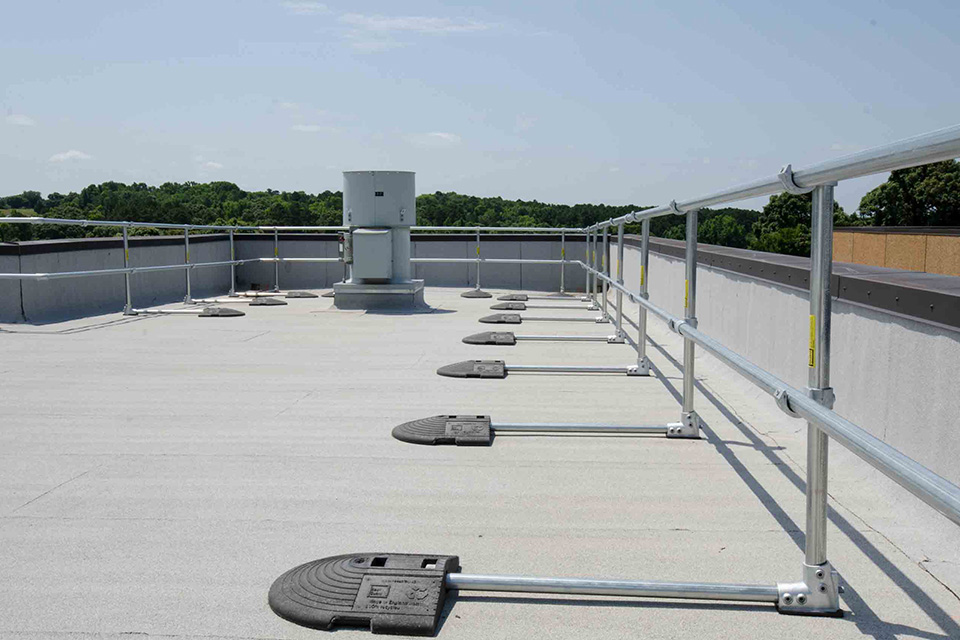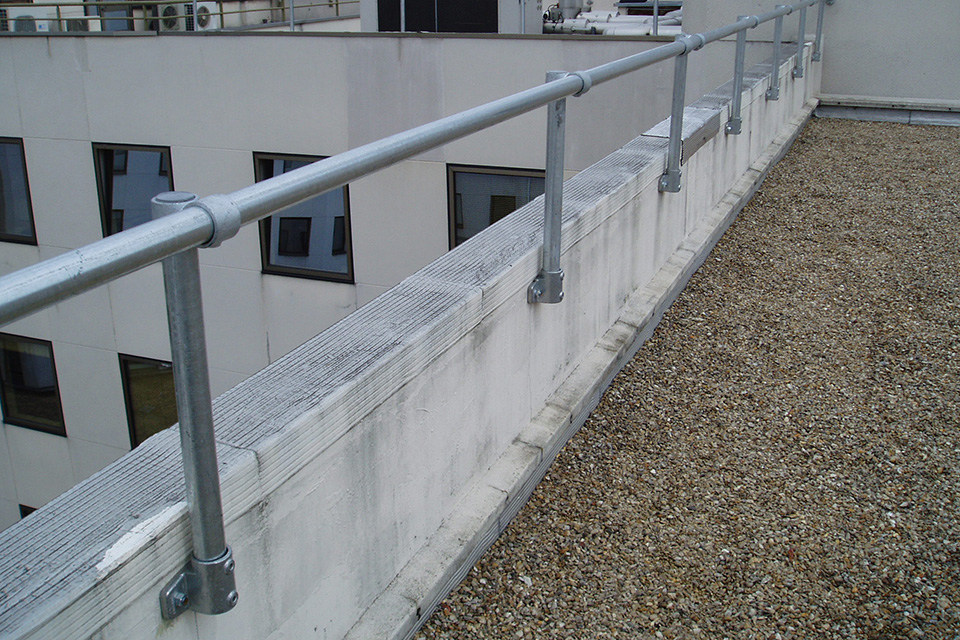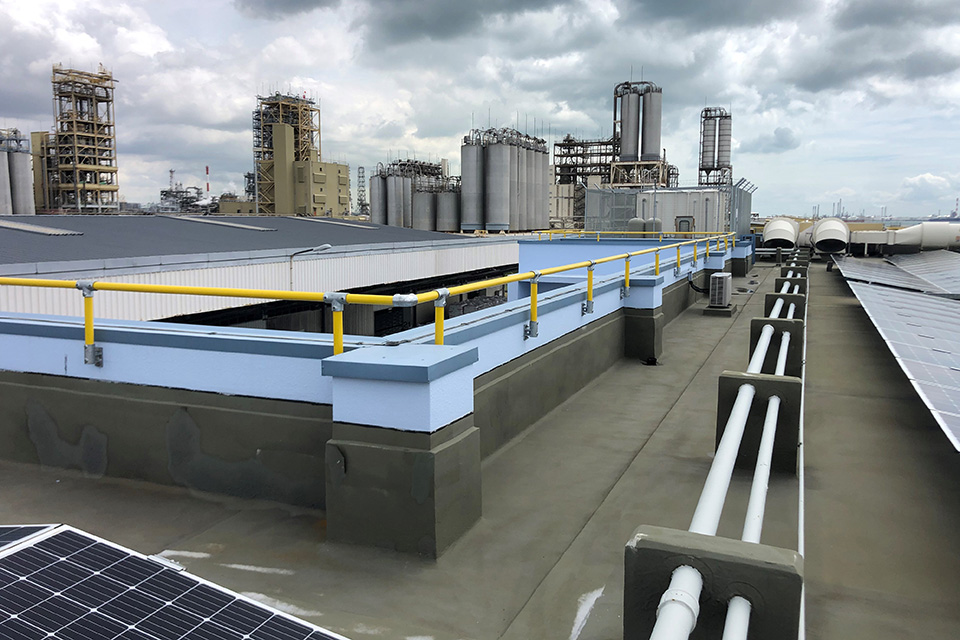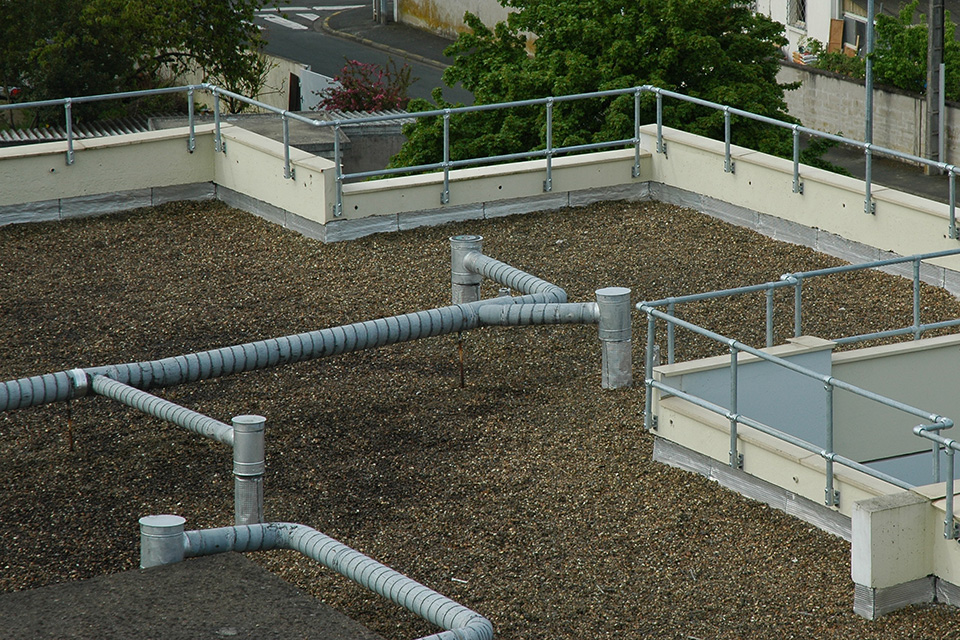Can a Parapet Wall be Fall Protection?

With falls being a leading cause of workplace injury and death, the rooftop is an easy place to look first to ensure a safe work environment.
You’re in luck, though. You have a parapet wall at the edge of your roof.
So, do you even need fall protection if you have a parapet?
Great question! The answer...maybe.
In this article, I’ll help you figure out if your parapet wall is capable of acting as fall protection and what you can do if it’s not.

What does OSHA say about Rooftop Fall Protection
Before we can determine if your parapet can act as fall protection, let’s understand what OSHA says about fall protection.
Any roof edge that is 4 feet or more above another level is considered a fall hazard and needs some form of fall protection.
OSHA states that guardrails, personal fall protection systems, and safety netting systems can be used as fall protection. In some cases, OSHA even allows the use of warning line systems depending on the distance to the roof edge from the walking/working surface and the type of work being performed.
So, how do parapets figure into this?
OSHA specifically mentions parapet walls when determining if a midrail is required for guardrail. In 1910.29(b)(2), OSHA says that “midrails...are installed between the walking/working surface and the top edge of the guardrail...when there is not a wall or parapet that is at least 21 inches high”.
This section of code helps us understand that parapet walls function as part of a guardrail system. Now we need to determine if the parapet is enough to act as a guardrail system.

How to Use Parapets as Fall Protection
If a parapet is going to be used in lieu of a guardrail system, then the parapet needs to meet the minimum requirements of a guardrail system.
The first thing you need to consider is if your parapet is tall enough. The required height for a parapet wall as fall protection is 39 inches or more. OSHA says that a guardrail needs to be 42 inches, plus or minus 3 inches. So, if your parapet wall height is at least 39 inches, then your first requirement is met.
The next is how much force the parapet can withstand. OSHA says that the top rail of a guardrail system needs to withstand at least 200 pounds of force. If your parapet can’t support 200 pounds of force, then I imagine you have more serious issues than fall protection to concern yourself with.
The last thing to consider is if your parapet is long enough. It may sound weird if you have a full perimeter parapet. However, many parapets only cover a single side of the roof. Or, they may have sections that vary in height. It’s also possible that a new addition was built and that is when a parapet was included or neglected. Either way, fall protection needs to be provided in every direction from the walking/working surface. Make sure that the parapet is at least 15 feet beyond the walking/working surface in all directions.
But what do you do if your parapet doesn’t meet one or more of these parameters?

Ways to Add Fall Protection to Your Parapet
If your parapet is not tall enough (39 inches or more) or long enough, then you need to supplement it with additional fall protection. The most common way to do this is by adding a guardrail.
The amount of guardrail that you need will depend on the height of your parapet wall. If your parapet wall is less than 39 inches but greater than 21 inches, then you only need to add a single rail guardrail. If the parapet wall is less than 21 inches, then you need to include a midrail.
We have a mounted guardrail that uses pipe and fittings. These fittings allow you to design a guardrail in a myriad of ways. You could angle the guardrail towards the roof to reduce visibility. You can use swivel fittings to turn corners of odd angles or curve around a rounded roof edge. Our specialists can help you design the mounted railing that best suits your parapet and fall protection needs.
If you’re concerned about the structural integrity of your parapet, then you can use a non-penetrating guardrail. This type of guardrail will sit on your roof without having to be attached to anything while providing compliant and safe protection. Kee Guard is a non-penetrating guardrail system that also uses pipe and fittings to allow for diverse customization while meeting federal and local codes.
Wrapping Up
Back to the original question; do you need fall protection if you have a parapet?
Yes, you do. However, if your parapet is tall enough, strong enough, and long enough, then that parapet can act as the fall protection you need.
If your parapet doesn’t meet these requirements or you’re not sure, then contact one of our fall protection experts. We can help you design a plan tailored to your specific needs.



